Three thousand miles, one suspended license, and a new transmission later, I was sitting across from Trishul Thejasvi at The Lost Kangaroo in my hometown of Bradenton, Florida.
This became a recurring scene as our favorite bar evolved into our makeshift office—the outside seating, our conference table. Perhaps not the best setting for business when the same homeless man who bummed a cigarette from you only thirty minutes before, returns to sell you palms woven into crucifixes—but we did get to drink.
The first conversations revolved around financing, and in general, getting whatever market there may be for Monty Comes Back interested. We knew we had a challenge no matter what. With an abundance of “independent” (however you’d like to read that) dramas and comedies saturating every American’s Netflix queue, it’s hard to separate yourself from the masses even once the film is made… so the question quickly became how do we separate ourselves from all the independent feature films being pitched day in and out on Kickstarter and Indiegogo?
When you’re on the inside of a film community it quickly becomes apparent how everyone and their mother is making a film, or at the very least has a Kickstarter for something. We had both collectively watched other crowdfunding efforts for films succeed and fail; we were aware of what they did right and wrong. We needed a gimmick, of sorts—something that was going to catch attention, if there was any attention to give.
“Why don’t we make a trailer for the film?” Trishul asked, following with a trip to the bathroom, which I could only assume was for dramatic effect.
It would take three weeks to convince me. Sizzle reels exist, and I was very aware of them. But a trailer specifically shot for a film that hasn’t been made yet? A truly successful example didn’t immediately come to mind, outside of Stranger Than Paradise where the first part of the film was shot before the rest, and it premiered as a short film prior to the film’s completion.
The conservative in me was frustrated knowing we would be spending money and time on the semblance of a project that would end up being a glorified proof-of-concept.
“Why don’t we just shoot the fucking film, then?” I probably passionately exclaimed more than once in response.
There were plenty of reasons we couldn’t just shoot the “fucking film.” And at some point it became apparent that Trishul’s idea was the way to go. Maybe it was after the age-old, “Come on. What have we got to lose? Four-hundred bucks? I’ve got the equipment.”
Whatever it was, moments later we both started sending texts to every resource we could, from cast and crew, to locations, to production design. By the next afternoon Trishul had amalgamated a script for the trailer from various scenes in the full, feature script, and I was hovering over his shoulder as he sketched up the storyboards and ordered a stuffed panda bear off the internet, arguing that it was a necessary prop (it worked its way in).
The only unfortunate aspect of this entire ordeal was that Trishul thought it would be a great idea for me to play Monty in the trailer.
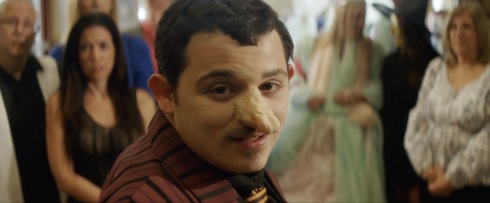
Look: at the end of the day, I’ll sack-up and do what I have to do; but as much as I love actors, I hate acting. As trite as it may sound, the vulnerability required to be in front of the camera is draining—nearly debilitating. Despite my belief that every last person on set is as important as the other, I can’t help but still believe actors have the hardest job—I will always appreciate this, especially after having to do it (at this point, many times.)
Things get difficult when discussing my own performance. I’m told I’m funny. I’d be arrogant to admit it myself, but ignorant not to acknowledge I’ve had no trouble making people laugh for years (check my detention record as testament). I know I’m no actor though. Without Trishul there, I would have most likely been unwatchable. At the end of the day, somehow, we got what we needed out of me; it certainly helps when you have a friend directing you.
The great thing about making the trailer, besides having some substance to show possible investors, is that it was a testing ground for cast and crew in the area. An excuse to simultaneously ‘audition’ actors I hadn’t worked with before, and meet some new crew along the way.
Many of the cast and crew who worked on the trailer ended up returning for the feature film:
- John O’Keefe, who plays Timothy, Monty’s theater director, reprised his role for the film. As well, he doubled as one of our two production designers for the feature, with the incomparable Joshua Steward.
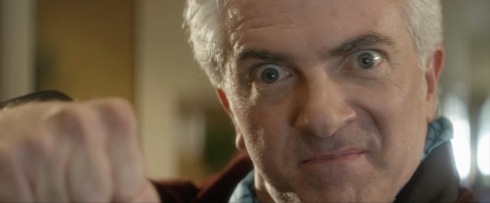
- Katelyn Studer plays Monica, Monty’s co-worker at the grocery store, in both the trailer and the film—again, another case of an actor moonlighting as crew; in this case, Katelyn acted as our 1st assistant director on the trailer.
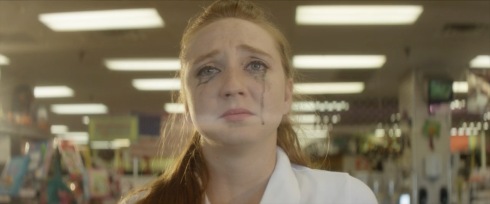
- In the script, Monty is performing in a musical. In the original version, the show in question was Wicked, by the shooting script it became A Midsummer Night’s Dream. In the trailer, Christine Bell plays Glinda (below: right of frame, in tiara); in the feature film, she reappears as Helena.
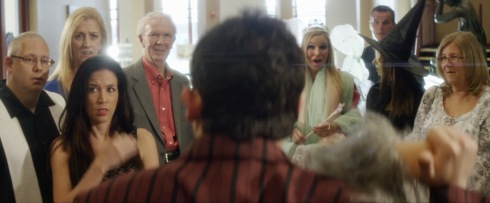
- Lilian Moore, who was featured as a theater patron in the trailer (above: left, back of frame) was re-cast as Celine, a woman who fondles Monty at a party.
- Carl Mario Nudi (a.k.a. my uncle) was featured as a homeless man in the trailer, in a scene not from the film’s script whatsoever. In the feature film, he plays a theater patron praising Monty for his performance.
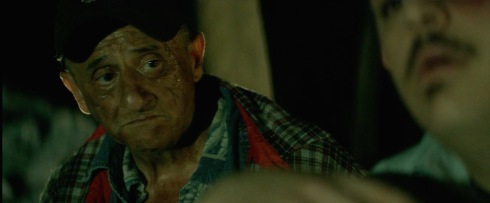
- Larry Wedrow, who has been a close family-friend since I was no older than four or five and watched me grow-up, filled an extra role as an older gentleman at a party Monty and his family attend. I love the guy so much (and everyone loved his face so much) that we brought him back to play the exact same role in the film.

- David Lendermon, a very close friend and my forever-go-to script supervisor, played Joel, Monty’s manager, in the original trailer. Though he didn’t reprise the role as Joel for the feature (that was expertly taken over by Stephen Birge), he does make a few cameos in the final film (I’ll leave it to you to spot them, like Hidden Mickeys—only with David.)
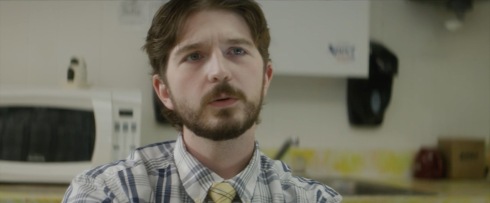
Our crew was very small: Trishul photographed the film, and together we co-directed the trailer; Megan Frisco and Giancarlo Hernandez from The Art Institute of Tampa were 1st and 2nd assistant camera, respectively; Emily Kernel did make-up, and doubled as art director for my continuing production designer, Joshua Steward; and my ride-or-die John Fisher was there for moral support, and shot some behind the scenes at that.
Our cast, including extras, were entirely local. Some even non-actors—people we thought looked the part, and could give us even a smidgen of what we needed, at least performance-wise. Our locations were our own homes and our families’ places of business. Craft services and lens rental were the major expenses, with the Kowa Anamorphic lenses providing much of the look we’d carry over to the full feature. We were able to stay right under $500. To be fair, through Trishul and Orensis Films, we already had a great majority of equipment we needed, including RED’s Epic Dragon, which tremendously brought our budget down while maintaining high production value.
Our approach to the trailer’s production would be similar to how we would have to approach the production of the film itself, especially on such a low budget—what we were expecting to only be about $10,000—”use what we have, and hope to pull as many favors as we can.”
There’s absolutely no denying the privilege already set in front of us. The RED, for Christ’s sake, not only saved us tons of money on a camera rental, but (at the time of writing this) is one of the top cameras for narrative cinema, and as much as it worked incredibly well with the old anamorphics, it established a set quality for the film that would immediately set our trailer apart from numerous other proof-of-concepts out there, let alone feature films.
We utilized our connections and pre-set benefits to the fullest degree, but the main thing that set us apart from other filmmakers trying to fund their first feature is the extra mile we went, regardless of any precious metal spoons that may have been already under our tongues. To this point: after filming the full feature, we had to remove the proof-of-concept trailer from the internet, not only due to the fact that Brandon Tyler Jones was now playing the leading role, but because numerous people from the general populous, to press, to other filmmakers were “impressed with what we had done,” convinced that the trailer to find investment, was in fact the official trailer for the film we had just shot.
Trishul already had a full set of beautiful Rokinons, that I’d argue give a lot of significantly more expensive prime lenses a run for their money—but we rented the Kowas. It helped that our film is about an artist in a delusional state, and the anamorphic lenses have a great ovular distortion that makes reality that much more surreal. Though, once again, something technical that worked for us narratively—and on a basic level—also set us apart from other films that might be seen as our “peers,” and it brought the production value up that much more, taking our trailer from glorified DSLR visuals, to the same glass that was used on Straight Outta Compton.
As I write, nearly lecturing whatever audience is reading this about pushing one’s self farther and going that “extra mile,” I think back to my hesitance to make the trailer in the beginning, as I pissed away close to $25 a night at The Roo, leading up the ‘go ahead.’ A moment away from complacency, and so willing to be passive… I can safely say I’m glad I woke up—and if you’re struggling, hopefully reading this is an alarm for you.
A weekend shoot later, we had plenty to work with, if not more. A few improvised moments even. With a lot more to organize, outside of the trailer’s post-production, it would be months before the trailer was finalized and launched with the Kickstarter.
Approximately one year after beginning our campaign, and releasing our faux-trailer, on Tuesday, February 16th, 2016 the official trailer for the film, (of course) Monty Comes Back, will be released—with a theatrical screening the following day at the monthly ManaSota Films showcase.
UPDATE:
The first official trailer for Monty Comes Back was released on the 16th, and is featured below!
Monty Comes Back Official Trailer from Orensis Films on Vimeo.
– Nudi
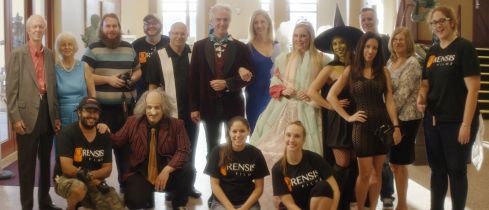

One thought on “Proving the Concept: Making a Trailer”
Comments are closed.